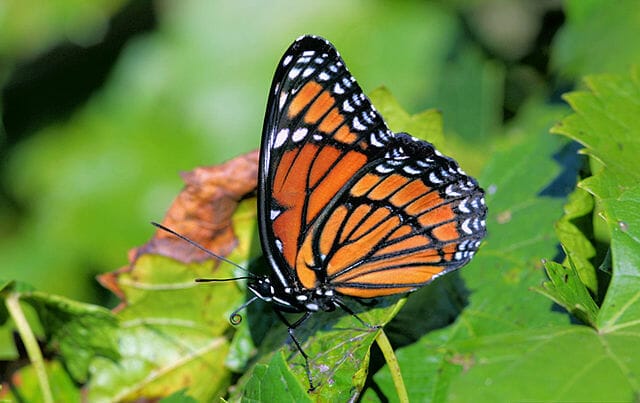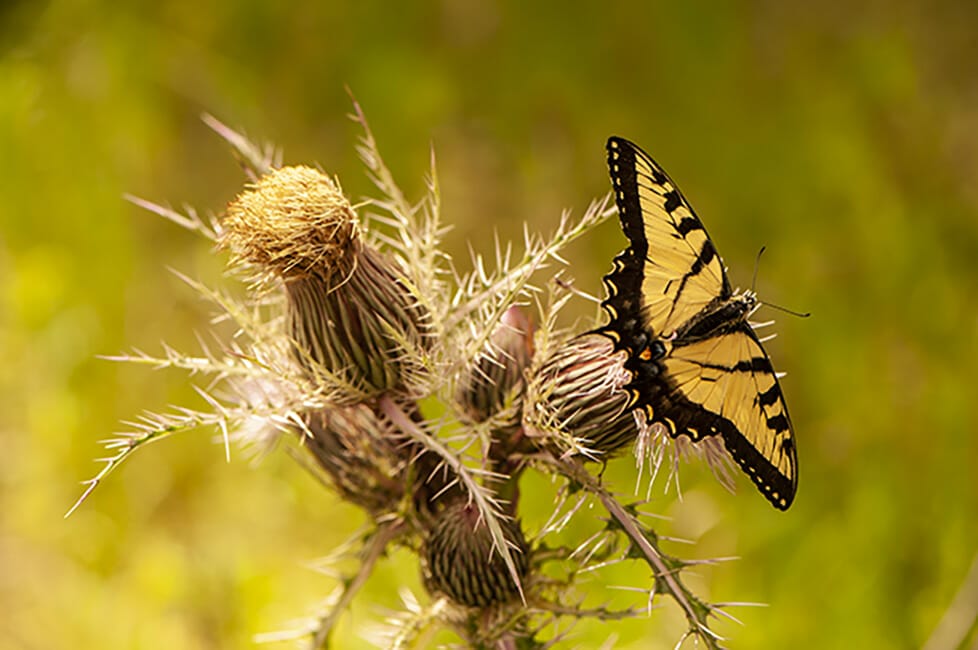

Uh oh...
It appears that you're using a severely outdated version of Safari on Windows. Many features won't work correctly, and functionality can't be guaranteed. Please try viewing this website in Edge, Mozilla, Chrome, or another modern browser. Sorry for any inconvenience this may have caused!
Read More about this safari issue.

Arkansas is geologically diverse, which creates excellent habitats for many species of butterflies. You can find different species throughout the mountains, lowlands and many river systems in the state. In the natural state, there are about 170 different species of butterflies. In 2007, Arkansas designated the Diana fritillary as its state butterfly, making it the 26th state to have a state butterfly.
Since there are so many species throughout the state, here are ten of the most common butterflies you can see in Arkansas!

Roy Cohutta, CC BY 4.0, via Wikimedia Commons
Diana Fritillary (Speyeria diana)
Wingspan: 3 7/16 to 4 7/16 inches
Family: Nymphalidae
Appearance: Males have broad orange borders at the edges of their wings. When they close their wings, they are a burnt orange color. Females have a dark blue coloration on the side of their wings and can look dusty grayish. The females of this species of butterfly are larger than the males.
Diet: Flower nectar and dung
Habitat: Sunny wooded and forest areas or edges

Charles J. Sharp, CC BY-SA 4.0, via Wikimedia Commons
Painted Lady (Vanessa cardui)
Wingspan: 5.1 cm to 7.3 cm
Family: Nymphalidae
Appearance: Wings are an orangish-brown with black patches and white spots. When they close their wings, you can see gray, black and brown marbled patterns.
Diet: Nectar from plants like thistles and ironweed.
Habitat: Open areas like fields, gardens and dunes.
Monarch (Danaus plexippus)
Wingspan: 3 ½ to 4 inches
Family: Nymphalidae
Appearance: You can see the orange with black veins when Monarchs open their wings. The margins on their wings have white spots. Sometimes the back wings can look yellowish at the tips. You can still see the black veins when their wings are closed.
Diet: Nectar from milkweed or other plants from the area
Habitat: During warmer months, open areas such as fields and meadows. In the winter, they prefer higher altitudes.

Zygy, CC0, via Wikimedia Commons
Common Buckeye (Junoia coenia)
Wingspan: 1.65 – 2.8 inches
Family: Nymphalidae
Appearance: All four wings are brown and have two eyespots on the main wings that are bright orange. The secondary wings also have orange eyespots. When they close their wings, you can see a brown or tan coloration, but they can turn reddish during cooler months.
Diet: Flower nectar like sunflower, tickseed, chickory, etc.
Habitat: Open areas and fields

Russ Ottens, University of Georgia, Bugwood.org, CC BY 3.0 US, via Wikimedia Commons
Viceroy (Limenitis Archippus)
Wingspan: 2.6-3 inches
Family: Nymphalidae
Appearance: The dorsal side of the Viceroy’s wings has an orange base with black patterns. On the secondary wings, you can see a single row of white dots by the black margin band. The wings are a mirrored image when they are closed.
Diet: Flower nectar
Habitat: Humid areas with trees like a meadow or marsh

Zeynel Cebeci, CC BY-SA 4.0, via Wikimedia Commons
American Copper (Lycaena phlaeas)
Wingspan: 7/8 to 1 3/8 inches
Family: Lycaenidae
Appearance: The American Copper is just how it sounds, a vibrant copper (reddish or tan tint). They have eight or nine brown spots along the edge of their opened wings. When their wings are closed, it has the same pattern but duller.
Diet: Flower nectar
Habitat: Forested clearings, urban waste grounds and downlands.

Female Eastern Tiger Swallowtail

Eastern Tiger Swallowtail (Papilio glaucus)
Wingspan: 3.1- 5 ½ inches
Family: Papilionidae
Appearance: Males have yellow wings with four stripes in black. Whereas females could have yellow wings or fully black. The edge of their wings has blue spots like a border.
Diet: Flower nectar like milkweed, butterfly bush, honeysuckle, lilac, etc.
Habitat: Urban parks, woodlands, rivers, creeks, gardens and roadsides.
Silver-spotted Skipper (Epargyreus clarus)
Wingspan: 1 ¾ to 2.63 inches
Family: Hesperiidae
Appearance: The base of their wings is brownish black and has markings of orange and yellow. Males have two black marks in the middle, females do not.
Diet: Flower nectar
Habitat: Open lands with sunlight, forest edges, fields and waterways.

Judy Gallagher, CC BY 2.0 <https://creativecommons.org/licenses/by/2.0>, via Wikimedia Commons
Common Wood Nymph (Cercyonis Pegala)
Wingspan: 1 ¾ – 3 inches
Family: Nymphalidae
Appearance: Wings are fully brown with two yellow eyespots. On the lower wings, there are small eyespots.
Diet: Flower nectar and rotting fruit
Habitat: Large, open fields that have plenty of sunlight.

Badics, CC BY-SA 3.0, via Wikimedia Commons
Red Admiral (Vanessa Atalanta)
Wingspan: 1 ¾ – 2 ½ inches
Family: Nymphalidae
Appearance: A base wing color of black with an orange band on the outer surface of the hind wings. There are also red and white patches on the tip of the ventral side of the wings.
Diet: Sap from trees, flowering plants and bird droppings.
Habitat: Moist areas like woods and fields, along with parks and marshes.
Join the Conversation
Leave a Comment
3 responses to “Identify the Most Common Butterflies in Arkansas”
 Leave a Reply
Leave a Reply
We do the work.
You check your email.
Sign up for our weekly e-news.
Get stories sent straight to your inbox!













 Leave a Reply
Leave a Reply
Unfortunately, your “monarch” photo also shows a viceroy. The easiest way to tell is to look for the black band on the hindwing, which the monarch lacks. https://en.wikipedia.org/wiki/Viceroy_%28butterfly%29#/media/File:Monarch_Viceroy_Mimicry_Comparison.jpg
[…] Want to know more about butterflies in Arkansas? A Time for Butterflies. For more information on the most common butterflies in Arkansas, click here. […]
[…] Common Butterflies in Arkansas […]